
The open floor plan of modern offices has its roots in ideas first conceived in the 1950s. In essence, removing barriers and ensuring the continued proximity of workers to each other was expected to facilitate communication and idea flow. But a growing body of evidence suggests that the open office undermines the very things that it was designed to achieve.
In June, 1997, a large oil and gas company in western Canada asked a group of psychologists at the University of Calgary to monitor workers as they transitioned from a traditional office arrangement to an open one. The psychologists assessed the employees' satisfaction with their surroundings, as well as their stress level, job performance, and interpersonal relationships before the transition, four weeks after the transition, and, finally, six months afterward. The employees suffered according to every measure: the new space was disruptive, stressful, and cumbersome, and, instead of feeling closer, coworkers felt distant, dissatisfied, and resentful. Productivity fell.
The research and analysis continues.
The New Yorker provides an interesting look at what we've learned about this new trend in workplace organization.
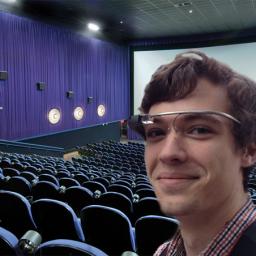 Reuters is reporting a drop in usage of Google Glass.
Reuters is reporting a drop in usage of Google Glass. Turns out:
After two years of popping up at high-profile events sporting Google Glass, the gadget that transforms eyeglasses into spy-movie worthy technology, Google co-founder Sergey Brin sauntered bare-faced into a Silicon Valley red-carpet event on Sunday.
Google Glass may be losing its mojo as users struggle to accept obviously creepy spy aspects of the new technology. A quick Google search turns up things like:
- TechCrunch: MPAA Bans Google Glass And Other Wearable Cameras From Movie Theaters
- Mew York Post: The revolt against Google 'Glassholes'
- Gizmodo: Is Google Glass Dying?
That's an inauspicious start to a new technology, and certainly the price tag doesn't help either: the test version of Google Glass comes with a $1,500 price tag. Says Reuters:
While Glass may find some specialized, even lucrative, uses in the workplace, its prospects of becoming a consumer hit in the near future are slim, many developers say.
Of 16 Glass app makers contacted by Reuters, nine said that they had stopped work on their projects or abandoned them, mostly because of the lack of customers or limitations of the device. Three more have switched to developing for business, leaving behind consumer projects.
[Author note: My personal experience? Google Glass is a difficult market even for business developers. As freelancing software developer I asked several of my customers what they think about possible Google Glass solutions. I pointed out some ideas how Google Glass could be used to benefit their business. Though the ideas were generally well received, they usually were answered with: Sounds very good, perhaps in the future. We are watching Google Glass. We thought about it ourselves, but don't think that at this point the necessary investments will pay off.
My advice to Google? Cut the price. For $150 I'd take the risk. Many nerd developers would. Google Glass needs a better reputation and a few killer apps. Only Google has the money and interest to improve the reputation of Google Glass. To find a killer app, it needs an as large as possible developer base. One does not get the latter with a $1500 product with a questionable future.]
[edited 2014-11-17 15:01 GMT: inauspicious, not auspicious]
Following closely on the new Raspberry Pi A+ announcement from yesterday, the new BeagleBoard-X15 has been announced:
http://linuxgizmos.com/beagleboard-x15-features-dual-core-cortex-a15-sitara/The device has decent specs: 2x 1.5GHz Cortex-A15, 2GB RAM, 4GB eMMC, eSATA port, 2xGigBit Ethernet, 3xUSB 3.0 ports, 1xHDMI.
From the site:
The original BeagleBoard pretty much single-handedly started the trend of open-spec Linux SBCs supported by hacking communities. It helped inspire the Raspberry Pi and dozens of other hacker boards. It had appeared that the BeagleBoard line would continue to fade into legacy as BeagleBoard.org focused on the BeagleBone, but the brand has come roaring back to life.
eLinux.org says it is hosting the official wiki for the device, and will offer more details in the coming weeks. The X15 is in beta and will ship from BeagleBoard.org and its hardware partners in late February, says ELinux.
No price has been announced yet.
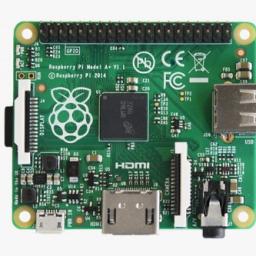
The Raspberry Pi Foundation has released a new lower-power, smaller, and amazingly cheaper Raspberry Pi version called the
Raspberry Pi Model A+. The model retails for $20.
A slightly more detailed analysis of the board can be found at
Raspi Today with information on exact weight, dimensions, and power consumption.
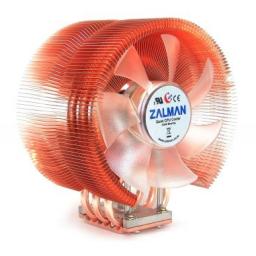
Zalman has
filed for bankruptcy.
Zalman was one of the pioneers of low-noise cooling solutions, in an era when stock coolers were noisy enough to drive people insane. Unfortunately for us all, on November 3, 2014 the company filed a bankruptcy protection request in the Seoul Central District Court.
Zalman did not fall victim to recession, competition or even bad corporate management. The whole story is long, complicated, obscure and yet unconfirmed, so unfortunately we may never learn all the details of it. To summarize, Zalman apparently was part of an allegedly very well designed and planned multi-billion dollar corporate fraud.
As an owner of quite a number of their
copper CPU blossoms, I hope that they can pull through and distance themselves from their troubled parent corporation.
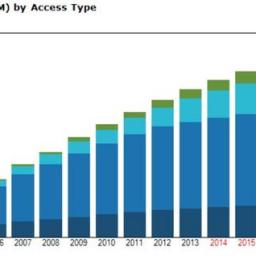
At the Broadband World Forum in Amsterdam this week, several companies are announcing and demonstrating products that bring DSL -- or digital subscriber line -- into a future with a
speed of 1 gigabit per second. That's about 1,000 times the data-transfer speed the technology offered when it arrived in the late 1990s. The DSL upgrade comes through a new technology called G.fast. The technology should arrive in homes starting in 2016.
Much of the world doesn't have cable-TV infrastructure at all, and still less of it has fiber-optic connections. Phone networks, though, are widely used, and covered about 422 million DSL subscribers globally in 2013, according to analyst firm IHS. That should rise to 480 million by 2018. But reflecting the competitive threat to DSL equipment makers, fiber optic links are expected to spread much more rapidly -- from 113 million in 2013 to 200 million in 2018. European customers are likely to favor G.fast in particular, Triductor CEO Tan Yaolong said. That's because labor costs are very high in that region, which discourages extensive renovation projects.
To meet its full gigabit-per-second potential, G.fast connections will require broadband providers to use network equipment close to the customers' buildings -- 50 meters (about 160 feet) or less. A 200-meter distance will still be good enough for about 600Mbps. That's why broadband providers have been placing their network gear closer to homes -- often in boxes under sidewalks, in cabinets by roads, or boxes attached to telephone poles. That's also why it's so expensive to upgrade broadband networks: the ISPs have had to extend their networks to bring that network gear closer to their customers.
So much for the Post-PC Revolution! Despite all the hype of tablets and their obvious benefits and use scenarios, the demise of traditional computing form factors seems to have been exaggerated. Never mind that 2014 will probably see over 250 million tablets shipped and sold,
tablet sales are actually slowing. Analysts predict that
Apple will probably face a year-long ipad sales dip, though it's hard to say what the effect of the most newly-released models will have.
But just as surprising,
sales of Chromebooks have actually surged over the last two quarters. Gavin Clarke at the Register points out recent research that projects a doubling of the Chromebook market year on year, with HP, Samsung and Acer taking the lion's share of the market. They still represent a small share of the market, with only 4 million units shipped (of 300m convential PCs in total), so it's too soon to say the Chromebook revolution is here.
But it does show surprising potential in the traditional laptop form factor, and give some reason to wonder if, despite all the hype about tablets, phablets, and smart phones, consumers still find themselves reaching for a portable device with a great keyboard.
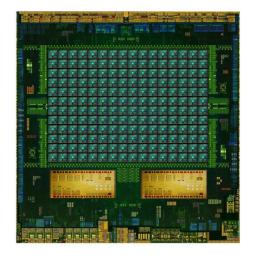
Who's happy about Google's newly-announced Nexus 9 Tablet? Well, lots of folks, but no one is happier than the guys at Nvidia. The Nexus 9 will be the first device to run new Android Lollipop, and
powering it will be the 64-bit version of NVIDIA's Tegra K1.
[The Tegra K1 is] an ARM Holdings v8-based beast with dual 2.3 GHz Denver CPUs, and 192 Kepler GPU cores. That's a huge relief for NVIDIA shareholders, who still remember last year's painful Tegra 4 delays, which enabled Qualcomm's Snapdragon S4 to win a coveted spot in Google's second-gen Nexus 7 tablet.
It's a fast chip, and reportedly
smokes both the Nexus 6 Adreno 420 and Galaxy Note 4 Mali T-760 in GPU tests. Furthermore, Using the superscalar micro-architecture,
these chipsets support Dynamic Code Optimization and use Kepler GPU architecture, which powers some of the world's few fastest gaming PCs and supercomputers.
The pundits claim this new chip, with its kepler architecture
will allow Google to bring state-of-the art graphics to Android for PC and console-class games. At a minimum, it will allow your Angry Birds to fly a hell of a lot faster.
[2014-10-22 19:43 edit: Typo: Nexus, not Nekus]
Electrical engineers at the Technische Universitit Mi1/4nchen (TUM) have demonstrated a new kind of building block for digital integrated circuits. Their experiments show that future computer chips could be based on
three-dimensional arrangements of nanometer-scale magnets instead of transistors. As the main enabling technology of the semiconductor industry - CMOS fabrication of silicon chips - approaches fundamental limits, the TUM researchers and collaborators at the University of Notre Dame are exploring "magnetic computing" as an alternative.
Think of the way ordinary bar magnets behave when you bring them near each other, with opposite poles attracting and like poles repelling each other. Now imagine bringing several bar magnets together and holding all but one in a fixed position. Their magnetic fields can be thought of as being coupled into one, and the "north-south" polarity of the magnet that is free to flip will be determined by the orientation of the majority of fixed magnets. Gates made from field-coupled nanomagnets work in an analogous way, with the reversal of polarity representing a switch between Boolean logic states, the binary digits 1 and 0.
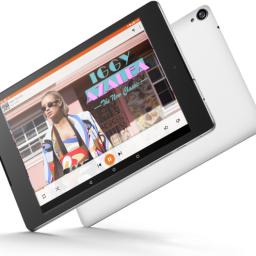
A lot of new tablet models are being announced this week as both Google and Apple update their lineup for the upcoming holiday season.
Google's new tablets include the Nexus 6 and the Nexus 9, while
Apple's new tablets include the iPad Air 2 and the iPad Mini 3.
Interestingly, the smaller Nexus 6 has a higher resolution screen and overall better specs than its larger cousin. Whether anyone wants to pay $650 for a 6"
tablet phone is another matter.
A Vietnamese site has
leaked more images of the updated Apple tablets ahead of the official launch.
 The open floor plan of modern offices has its roots in ideas first conceived in the 1950s. In essence, removing barriers and ensuring the continued proximity of workers to each other was expected to facilitate communication and idea flow. But a growing body of evidence suggests that the open office undermines the very things that it was designed to achieve.
The open floor plan of modern offices has its roots in ideas first conceived in the 1950s. In essence, removing barriers and ensuring the continued proximity of workers to each other was expected to facilitate communication and idea flow. But a growing body of evidence suggests that the open office undermines the very things that it was designed to achieve. 




